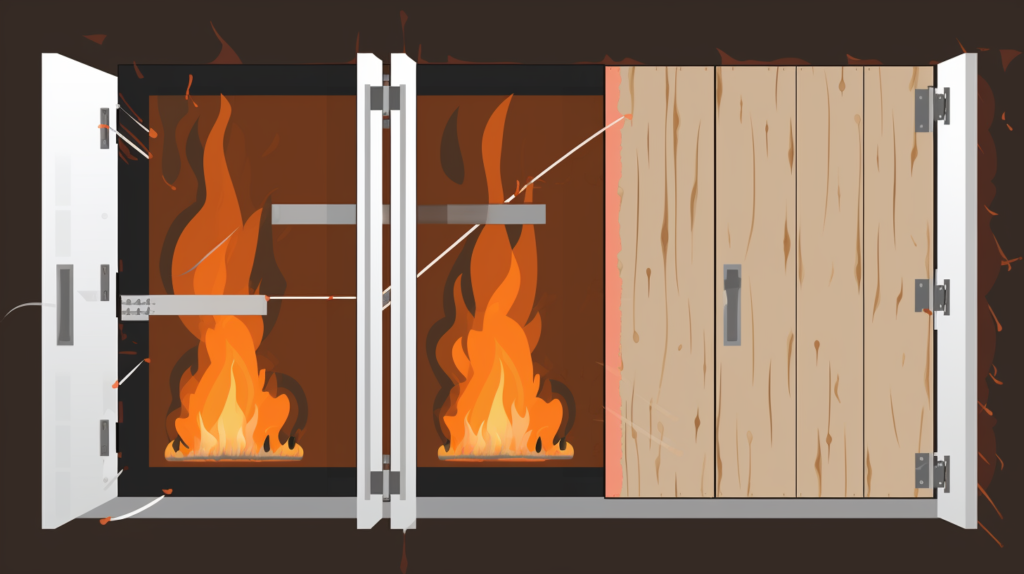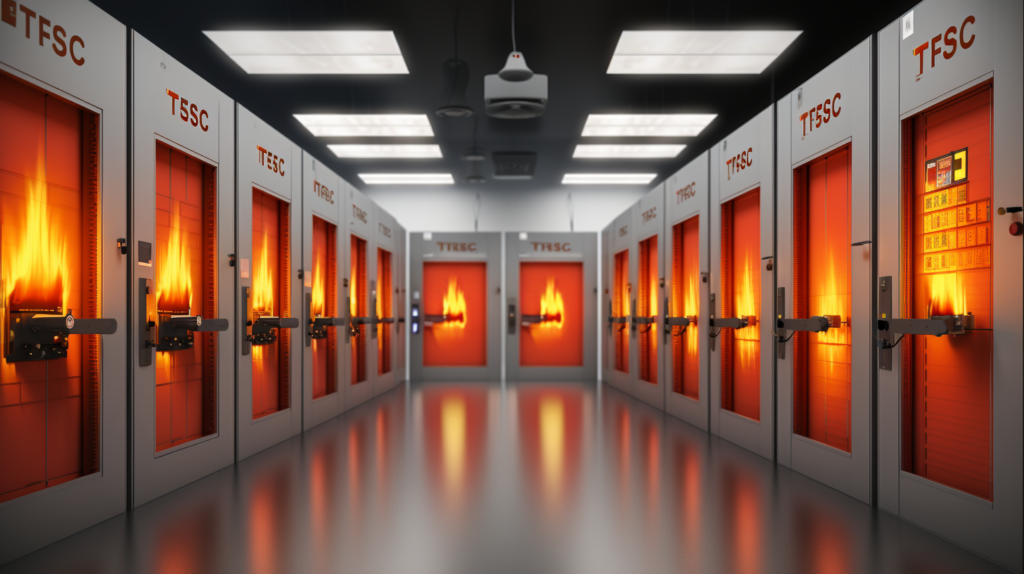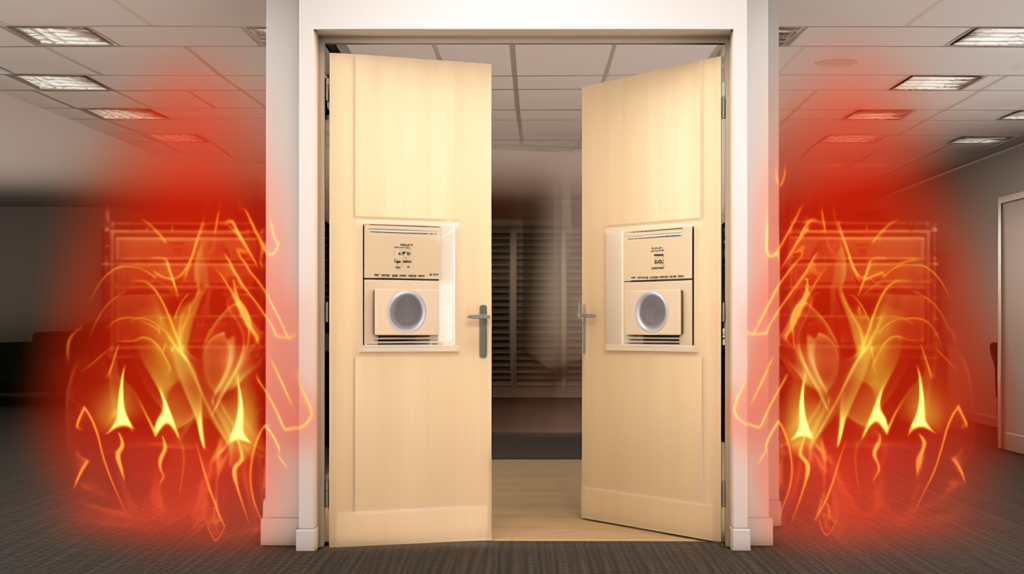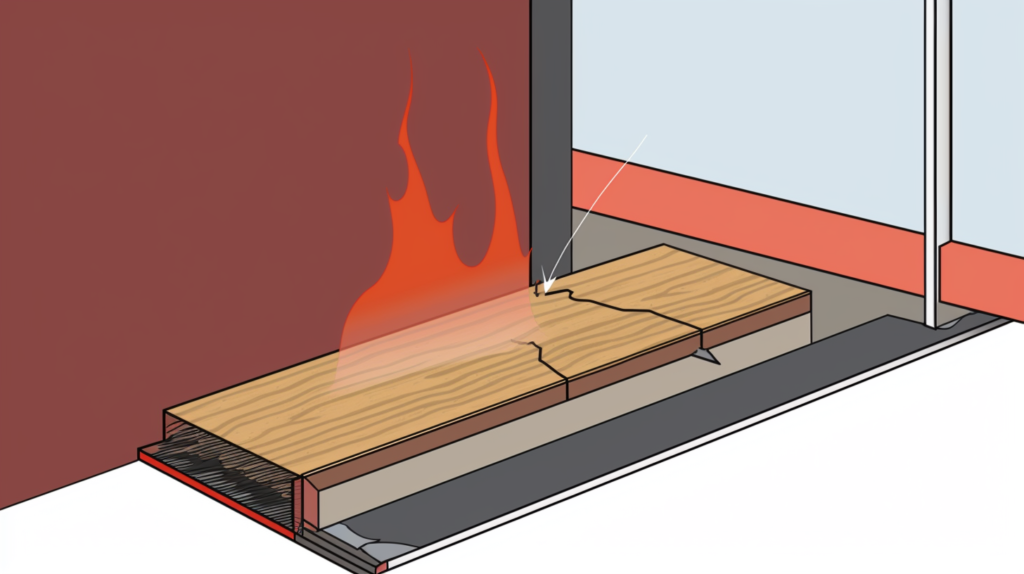Amidst the chaos of a fire, doors that can halt flames become lifesavers, but is their strength against sound as potent as it is against fire?
Fire doors do more than protect against flames; their dense build offers a secondary benefit of dampening sound, yet they’re not crafted with acoustics as the priority, leaving room for improvement.
Let’s dive in to unravel the true extent of a fire door’s soundproofing qualities and the means to enhance them.
Is Fire Resistance = Sound Reduction?

Fire doors are integral components in the design of safe buildings, acting as a protective barrier in the event of a fire.
They are constructed with robust materials that are selected for their ability to withstand high temperatures and prevent the spread of flames and smoke.
This solid construction also has the side effect of reducing sound transmission.
The materials used in fire doors, such as thick timber, metal, and gypsum, have mass and density that naturally block out sound to a certain degree.
This phenomenon is a welcome benefit, as noise control is a significant consideration in the architectural design of buildings, especially in environments like hospitals, schools, and office buildings where noise levels can significantly affect the usability of spaces.
Is There Any Limitation To Fire Doors Being Soundproof?

One of the main reasons for this limitation is that fire doors often have necessary gaps to allow for ease of operation, which can also let through sound.
The perimeter gaps required for a fire door to function properly without binding can undermine its soundproofing ability.
These gaps are minimal, but even small openings can significantly diminish the door’s ability to block sound.
Furthermore, fire doors may not always be fitted with the same type of seals and damping materials that are used specifically for soundproofing purposes.
Therefore, while a fire door can offer a certain level of sound attenuation, it may not provide the same level of sound insulation as a door that is designed and sealed specifically for acoustic purposes.
Fire Door Ratings And Soundproofing

Fire door ratings are a key aspect of their design and function, indicating the length of time that a door can withstand fire before it begins to lose its structural integrity.
The FD30 rating signifies that a door can withstand fire for 30 minutes, while an FD60 rating means the door can last for 60 minutes.
These ratings are determined through rigorous testing procedures that simulate the conditions of a fire.
The ratings focus on the door’s ability to resist fire and smoke and do not account for its performance in blocking sound.
This distinction is important for builders and buyers to understand when selecting doors for their projects.
If soundproofing is a priority, then it is necessary to look beyond the fire rating and consider the Sound Transmission Class (STC) rating as well.
Sound Transmission Class (STC) Ratings Explained
The Sound Transmission Class rating is an integer rating of how well a building partition attenuates airborne sound.
In the case of fire doors, the STC rating measures the degree to which the door can reduce the transmission of sound. The higher the STC number, the better the door is at blocking sound.
An STC rating is determined by testing the door in a laboratory to see how well it can reduce the transmission of different frequencies of sound.
A door with a higher STC rating typically has added materials or special construction techniques that enhance its sound-deadening capabilities.
It is important for consumers to understand that a door can have a high fire rating but a low STC rating, and vice versa.
Thus, for effective soundproofing, one should consider doors with high STC ratings, especially in settings where noise reduction is critical.
Factors Affecting The Soundproofing Capabilities Of Fire Doors

The ability of a fire door to insulate against sound depends on several variables beyond its fire resistance rating.
The construction of the door itself, including the materials from which it is made, plays a critical role in its soundproofing efficiency.
Heavier materials, such as dense woods and metals, naturally block more sound than lighter materials. This is because sound waves are better absorbed or reflected by materials with greater mass.
The thickness of the door contributes as well to its soundproofing capabilities. A thicker door will typically have a higher STC rating, meaning it can dampen more noise.
However, fire doors are usually left with gaps when the doors are closed and also from the top and bottom of the doors.
Since if it’s tightly installed onto the frames then most of the people would not be able to push the doors open with that kind of weight.
Something like pushing a big boulder and hoping it will move.
So How Do You Enhance The Soundproofing Aspect Of Fire Doors

Improving the soundproofing of fire doors involves several potential modifications, all of which must be done without compromising the door’s fire resistance.
One common approach is to upgrade the seals around the door. Acoustic rubber seals are designed to prevent sound waves from traveling through the tiny gaps around the door perimeter.
These seals often need to be more robust than those used for fire resistance alone, as they must also dampen vibrations to be effective against sound transmission.
Adding door bottoms or drop seals can also significantly reduce the amount of sound that passes beneath the door.
These mechanisms often involve a seal that is activated when the door is closed, filling the gap between the door and the floor.
It is crucial that any enhancements to the door’s soundproofing are done in compliance with fire safety regulations.
Modifications should be carried out by professionals who specialize in both fire door installation and acoustic treatments to ensure that the door’s fire resistance is not inadvertently compromised.
Now, you might be wondering that in our previous paragraph, we mentioned that if the doors are installed tightly then we would not be able to push it open but now what we are suggesting is to install seals and bottoms around the gaps of the doors when it’s closed.
So, if the doors are installed tightly to the frame, then visually imagine it having a block of wood sealed to the frame to make it tight. Essentially, you cannot open it as easily as when they are meant to be a door.
After installing it as a door, and then sealing off the gaps with rubber tubing called acoustic seals it would be able to still open as easily but when it closes, the door and the rubber push against each other leaving no gaps in between – thereby enhancing the soundproofing of the door.
Conclusion
Fire doors are a critical element in building safety, providing resistance to fire while incidentally offering some level of sound reduction.
It is essential, however, to recognize the distinction between fire resistance and soundproofing, as they serve different, albeit equally important, functions.
To enhance the soundproofing of fire doors effectively, additional measures like acoustic seals and door bottoms are necessary and can be implemented without compromising fire safety.
The ultimate message is that with thoughtful selection and professional modification, fire doors can meet the dual demands of safety and quietude.
This balance is crucial for the well-being and comfort of occupants in any building.
Thus, while fire doors may not be inherently soundproof, they can be optimized to provide a peaceful and safe environment.
